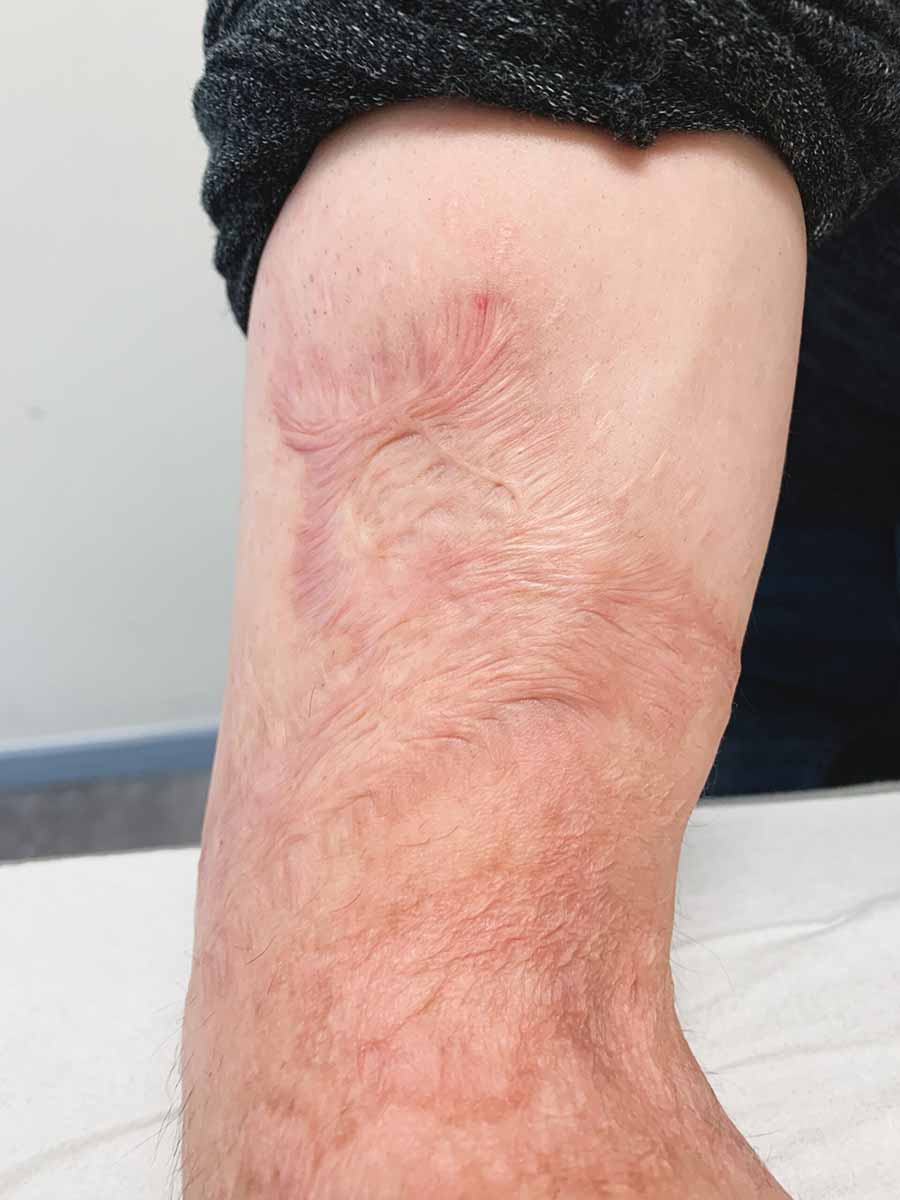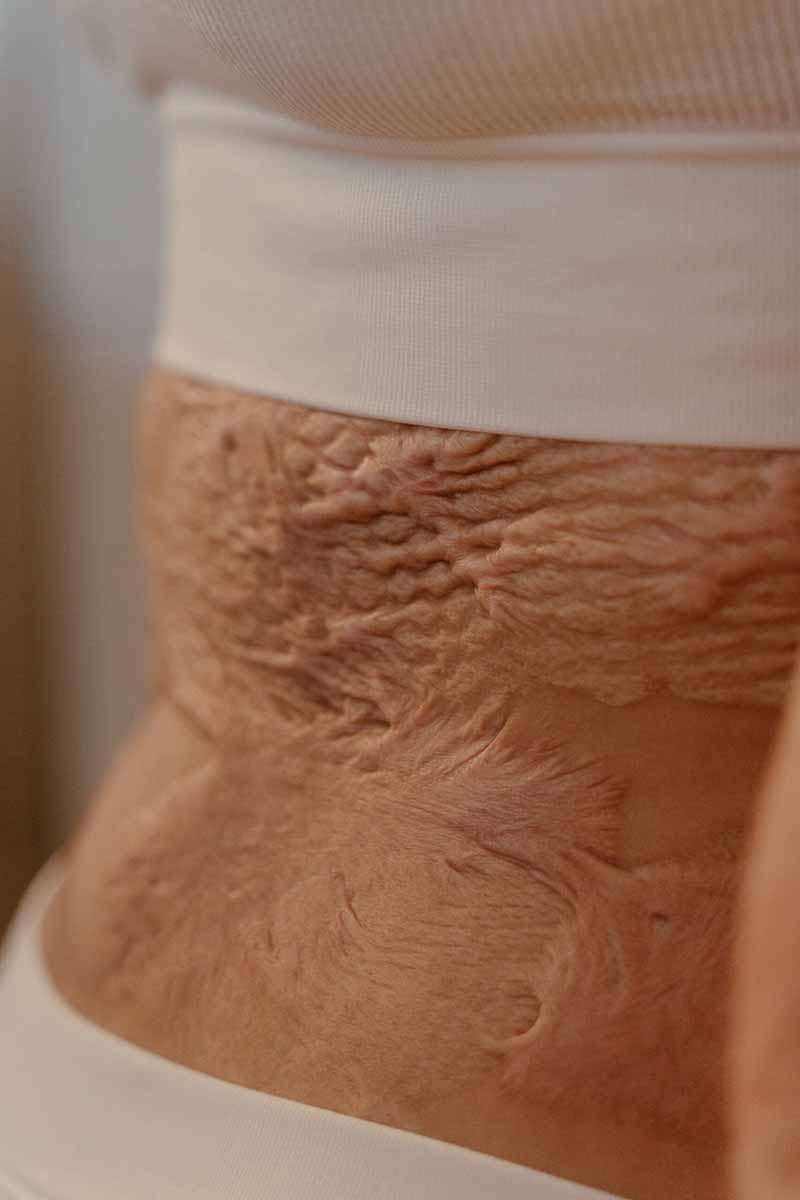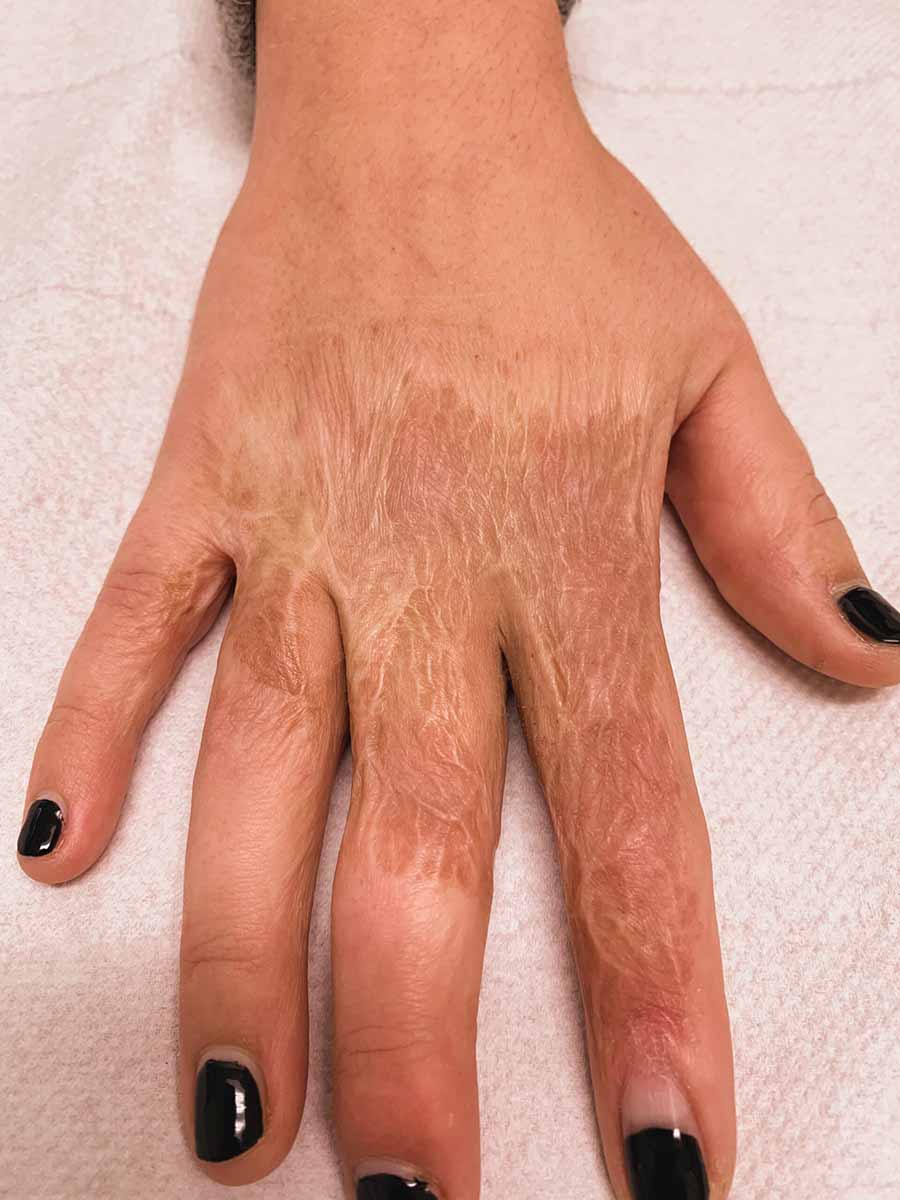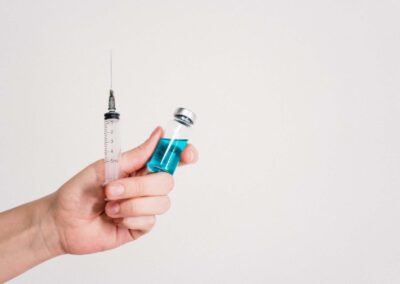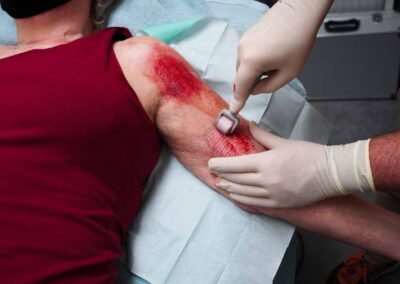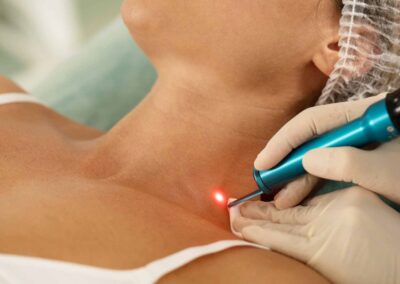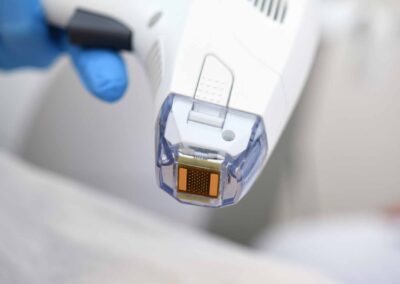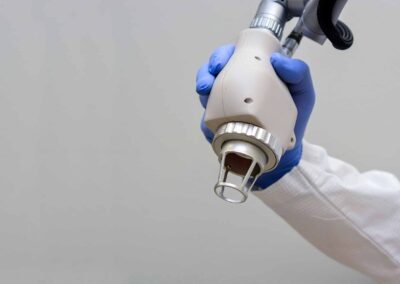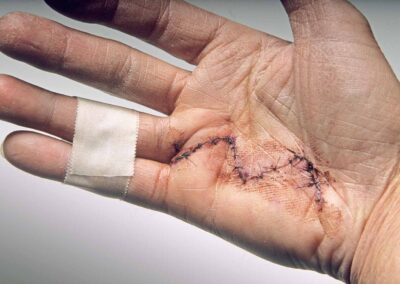Texture
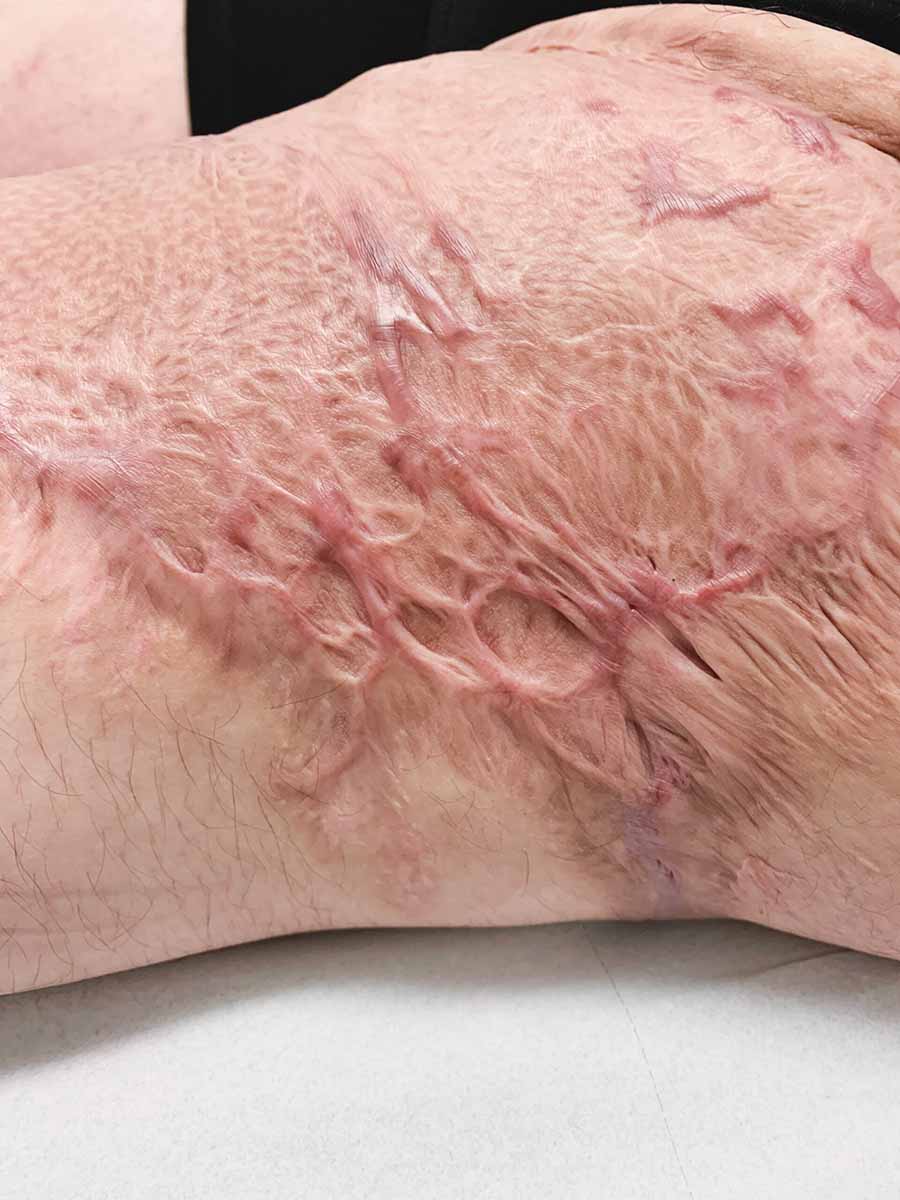
About Texture
Scars can form an uneven texture when the dermis (deep, thick layer of the skin) is damaged. The body forms new collagen fibres to mend the damage, resulting in a scar. The new scar tissue will have a different texture and quality than the surrounding tissue, due to excessive production of collagen. An injury with damage to various skin depths which heals by secondary intention also causes abnormal collagen synthesis; this leads to a variety of thicker and thinner bundles. Eventually this results in an irregular scar surface often seen in large surface burn injuries. Irregularities of the scar surface (surface roughness or texture) are also seen after split skin autografting, especially if the skin graft is meshed (holes are made in the skin graft). With a meshed graft, the irregularities result from secondary healing of the interstices (holes) of the meshed skin graft. To improve scar texture, especially in older scars, semi-invasive or invasive treatments are required. Treatments like micro-needling and laser therapy often have very effective results.
Treatment options for Texture
More info about the categories
- Home Treatments: The major part of your scar treatment happens at home. There exists a wide variety of home treatments like pressure therapy, silicone, topicals etc…
- Non Invasive Treatments: Several scar management techniques performed by scar specialist have proven their efficacy and will help you to improve your scar.
- Minimally Invasive Treatments: These treatments have become increasingly popular over the last years. Highly visible results and short recuperation times are responsible for this popularity.
- Surgery: Reconstructive surgery is often seen as the last option after all other treatment options have failed. However, with burn scars it is often a necessary measure.
Below you will find an overview of all possible treatments. Click on the different categories to look for specific types of treatment.

